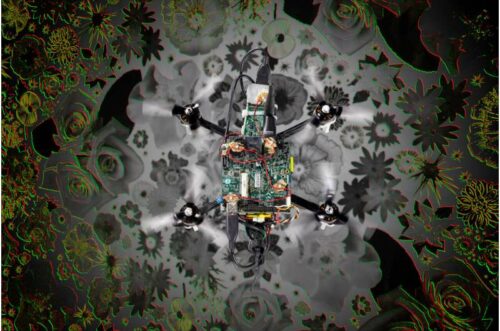This suggests a future where drones could become as small and agile as insects or birds, offering potential applications in areas like greenhouse monitoring and warehouse inventory management.

Researchers at Delft University of Technology have developed a drone that flies autonomously using neuromorphic image processing and control inspired by animal brains. Unlike current deep neural networks running on GPUs, animal brains use less data and energy. Neuromorphic processors are suitable for small drones because they require less hardware and battery power. The drone’s deep neural network processes data up to 64 times faster and uses three times less energy than a GPU. Further advancements may enable drones to become as small and agile as insects or birds.
Spiking neural networks, inspired by the brain’s processing methods, hold potential for autonomous robots. Current AI relies on deep neural networks requiring significant computing power and energy, a limitation for small robots like drones. Animal brains process information asynchronously and communicate via electrical pulses, or spikes, which are energy-efficient. Scientists and tech companies are developing neuromorphic processors to run spiking neural networks, promising faster and more energy-efficient performance. According to Jesse Hagenaars, a Ph.D. candidate involved in the study, spiking neural networks simplify calculations, making them quicker and more energy-efficient compared to standard deep neural networks.
Vision and Control
Neuromorphic processors’ energy efficiency increases when combined with neuromorphic sensors, like cameras that only send signals when pixels change brightness. These cameras perceive motion quickly, are energy-efficient, and work well in varying light conditions. Researchers from Delft University of Technology demonstrated a drone using neuromorphic vision and control for autonomous flight. They developed a spiking neural network that processes signals from a neuromorphic camera, determining the drone’s pose and thrust. The network runs on Intel’s Loihi neuromorphic research chip.
Training the spiking neural network involved self-supervised learning and artificial evolution in a simulator. The drone can fly at different speeds and under varying light conditions. Measurements confirm the potential of neuromorphic AI. The network runs significantly faster and more efficiently on the neuromorphic chip compared to a GPU, consuming less power. This enables deployment on smaller autonomous robots.
Guido de Croon, Professor in bio-inspired drones, highlights that neuromorphic AI is crucial for tiny autonomous robots. Applications include monitoring crops in greenhouses and tracking stock in warehouses. The current work is a step towards achieving these applications, with further developments needed to scale down hardware and expand capabilities.






